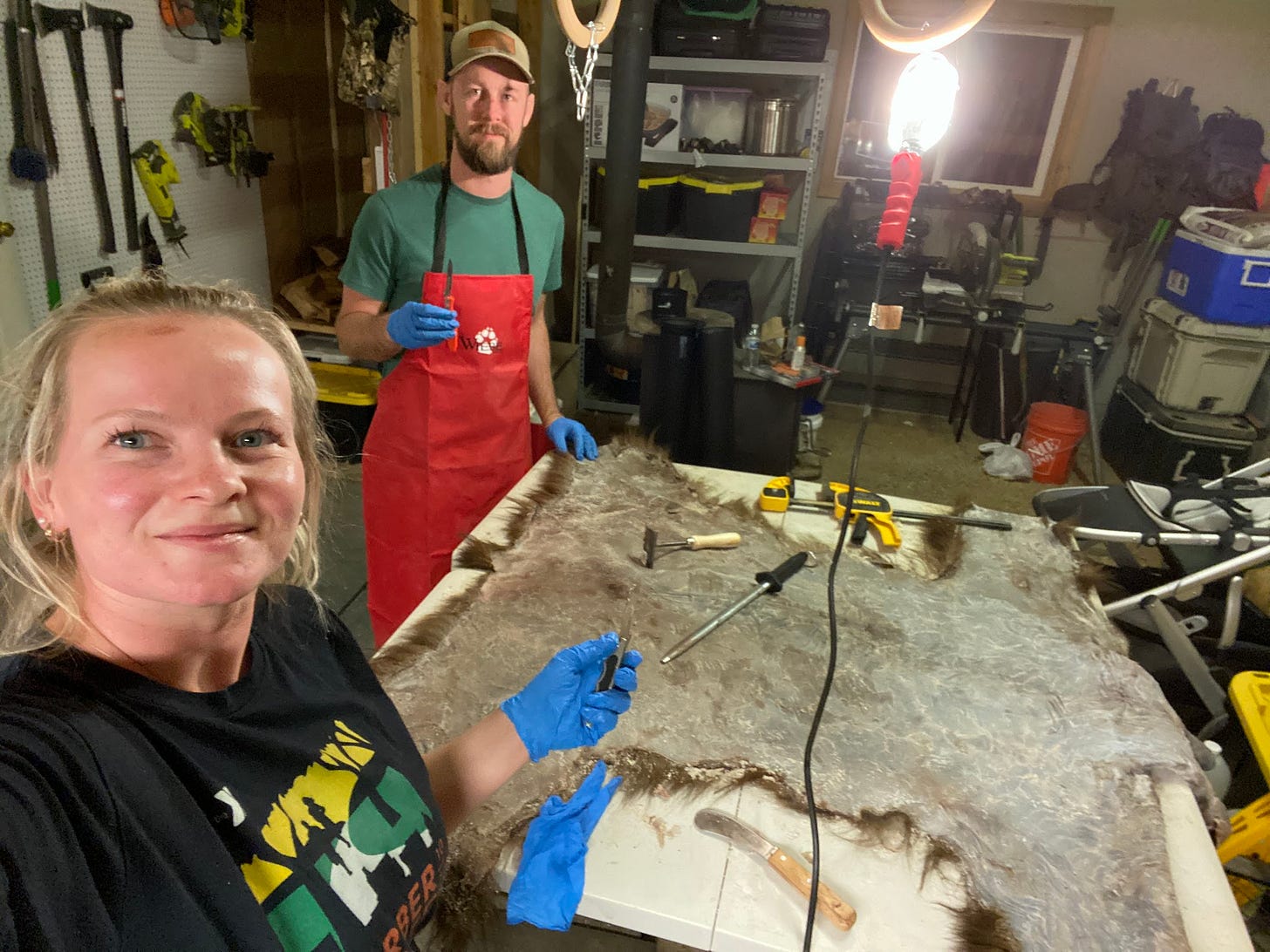Bears are fatty, which stands true even for the more gaunt spring bears that we are talking about about in this series. Overall, fat is a great thing on bears and is delicious once rendered down into a cooking oil, but any fat that is left on the skin is detrimental to the longevity of your future tanned hide. Specifically, if you leave any significant amount of fat on the hide you will see “hair slippage” over the coming months and years and your beautiful pelt will start to look like it has caught the mange.
So, before we start to go through the tanning process we must ensure we remove as much fat as possible... which is a very time consuming task. As you prepare for this make sure that you (and your help) have many hours to spare... maybe even bust out an episode of “The Bear Grease” podcast to pass the time.
The tasks and tools for this process are minimal and includes:
A knife — fleshing knife, beaver knife, or a havalon*, and then;
Begin to remove any and all fat globules from the flesh, and;
Do this until you lose your mind wondering how fat magically seems to reappear, and;
Once your hide starts to take on a blue-ish hue you can quit.
For my self-tanned hide, my wife and I spent two evenings of about three hours each slowly removing fat while our infant daughter sat and watched. Take your time and remember the more help you can get, the faster this will go.
*If you use a havalon for this portion be very careful not to cut a hole into your hide.




